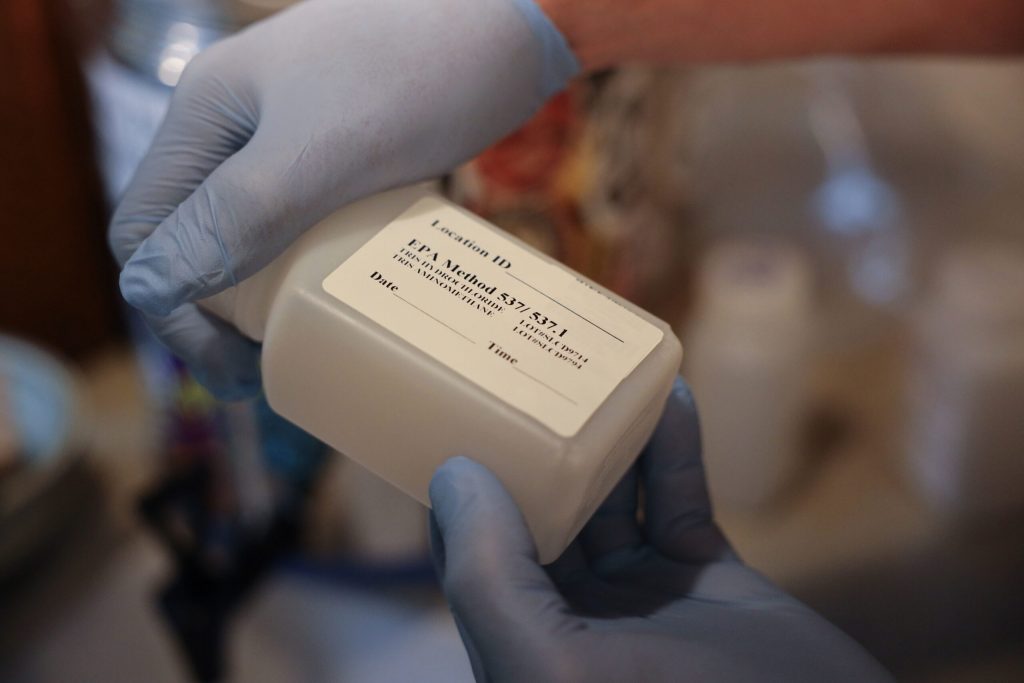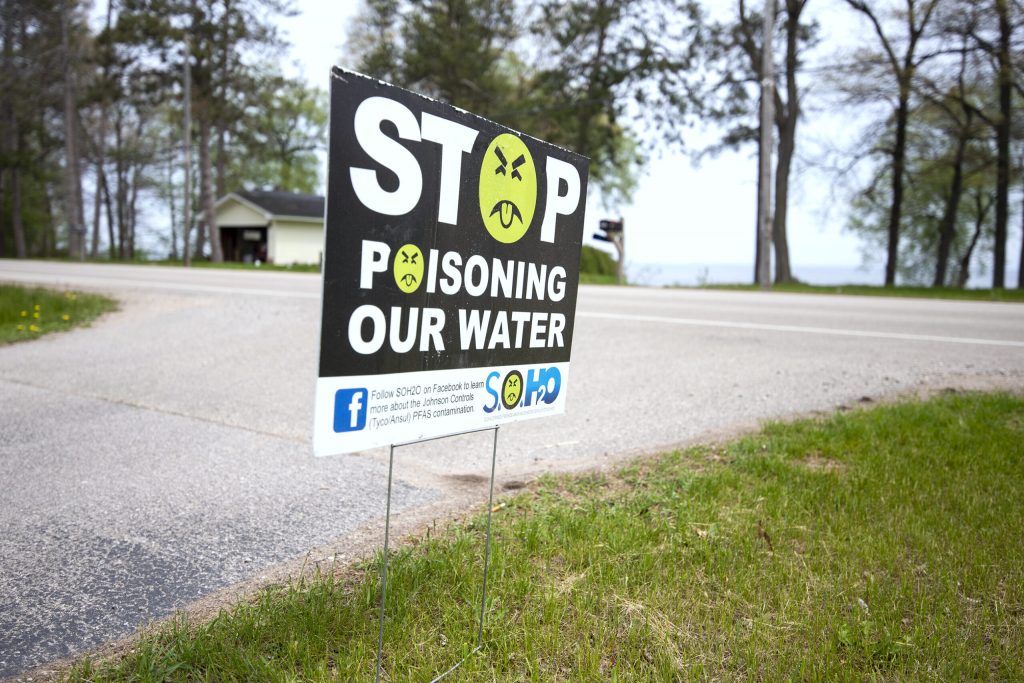EPA Slaps Two PFAS Chemicals With Superfund Law Designation
The listing will force PFAS manufacturers and others to pay for cleaning up contamination.
The Environmental Protection Agency has listed two PFAS chemicals as hazardous substances, an action that will force businesses and those responsible for pollution to fund cleanup of the chemicals.
The EPA designated PFOA and PFOS as hazardous substances under the Superfund law also known as the Comprehensive Environmental Response, Compensation, and Liability Act.
“Designating these chemicals under our Superfund authority will allow EPA to address more contaminated sites, take earlier action, and expedite cleanups, all while ensuring polluters pay for the costs to clean up pollution threatening the health of communities,” EPA Administrator Michael S. Regan said in a statement.
The Superfund law also provides money for cleaning up contamination when no responsible party exists. The agency doesn’t intend to seek PFAS cleanup or costs from farmers, water utilities, municipal airports, fire departments and landfills.
The Wisconsin Department of Natural Resources is actively investigating PFAS contamination at around 100 sites in the state, according to its website tracking environmental cleanups. Christine Sieger, director of the DNR’s Bureau of Remediation and Redevelopment, said in a statement that most contaminated sites in Wisconsin are addressed under state authority rather than federal law.
“As such, ensuring the DNR has all the regulatory tools available to respond to contamination as well as support Wisconsin communities struggling with contamination with funding and resources remains crucial,” Sieger said. “For the limited group of sites that are in the Superfund program, the federal program is important.”
Communities could be designated Superfund sites for PFAS pollution
PFAS, or perfluoroalkyl and polyfluoroalkyl substances, have been used by industry in products ranging from nonstick cookware to firefighting foam since the 1940s. Most manufacturers voluntarily phased out use of the chemicals, but they remain in limited use and don’t break down easily in the environment. Multiple studies have linked the chemicals to serious health effects that include increased risk of kidney and testicular cancers, thyroid disease and fertility issues. They have also been tied to reduced response to vaccines.
The town of Peshtigo in northeastern Wisconsin has struggled for years with PFAS contamination of private wells stemming from Tyco Fire Products’ fire training facility in Marinette. Last week, the company reached a $750 million settlement with communities that detected the chemicals in their public water supplies.
Two years ago, Peshtigo residents petitioned the EPA to review the suspected release of hazardous substances under the Superfund law due to PFAS contamination tied to the firefighting foam manufacturer, which announced it will end use of foam containing the chemicals by June.
Cindy Boyle, who filed the petition, said the EPA’s designation renews hope that the town has a path forward to clean up PFAS contamination. “I’m really ready for the work ahead of us to make sure that the EPA keeps the town of Peshtigo, city of Marinette, fully on their radar, doing right by the residents in this area, and holding our responsible party accountable for any costs associated with it,” Boyle said.

An aerial view of Tyco’s Fire Training Center in Marinette. Photo courtesy of Johnson Controls International
Two years ago, Wisconsin Attorney General Josh Kaul sued Tyco and Johnson Controls for violating the state’s hazardous spills law, adding the company hasn’t done enough to clean up PFAS contamination.
Tyco and Johnson Controls have built a system that’s treated 97 million gallons of contaminated groundwater through last November, according to the DNR. The system has reduced levels of the chemicals from as high as 18,000 parts per trillion to between 1 and 21 parts per trillion for PFOA, which are below state drinking and surface water standards.
Boyle and another Peshtigo resident petitioned the EPA to examine the area as a potential Superfund site after the Wisconsin Natural Resources Board failed to pass groundwater standards for PFAS.
Last fall, the DNR announced it was abandoning its second attempt to craft regulations for the chemicals in groundwater due to a 2017 law aimed at preventing excessive compliance costs.

Madison resident Brad Horn collects a water sample to test for PFAS in Madison, Wis., on Aug. 8, 2022. His family tested the water that came out of their AquaRain brand water filter and sent the water to the Regional Water Authority in Connecticut for testing. The results came back with no detectable levels of PFAS in 17 categories and one result of “below Minimum Reporting Level but greater than the Method Detection Limit” for PFHxS. Coburn Dukehart/Wisconsin Watch
Since then, both Republicans and Democrats in the Legislature introduced bills to allow the DNR to continue work to set standards for the chemicals in groundwater. But the proposals failed to pass before the end of the legislative session.
Democratic Gov. Tony Evers recently vetoed a Republican bill that would have provided grants to communities and landowners to address PFAS contamination, citing limits on the DNR’s authority to test for and clean up the chemicals. Evers and GOP lawmakers remain at odds over how to spend $125 million set aside under the current budget to address PFAS contamination.
At the same time, Wisconsin Manufacturers and Commerce has sued the DNR over its authority to force businesses to clean up the chemicals. Last month, a state appeals court upheld a Waukesha County judge’s ruling that state regulators must first list PFAS as hazardous substances through the state’s rulemaking process before requiring businesses to clean up the chemicals.
Editor’s note: This story will be updated.
EPA lists 2 PFAS chemicals as hazardous substances was originally published by Wisconsin Public Radio.
If you think stories like this are important, become a member of Urban Milwaukee and help support real, independent journalism. Plus you get some cool added benefits.
More about the PFAS Problem
- Bipartisan Push to Tell Counties Faster When Water Tests Fail - Henry Redman - Dec 19th, 2025
- MKE County: County Seeks to Sue PFAS Producers, Oil Companies - Graham Kilmer - Dec 10th, 2025
- Wisconsin Reviewing EPA-Approved Pesticides For PFAS - Danielle Kaeding - Dec 9th, 2025
- State Nears Settlement with Johnson Controls/Tyco Over PFAS Spills - Danielle Kaeding - Dec 4th, 2025
- Senate Bill Promotes Soybean-Based Firefighting Foam to Replace PFAS - Danielle Kaeding - Dec 2nd, 2025
- Test Results Show High PFAS Levels in Wisconsin’s Landfill Runoff - Danielle Kaeding - Dec 2nd, 2025
- Wisconsin Communities Get $282 Million for Drinking Water Projects - Danielle Kaeding - Nov 19th, 2025
- Gov. Evers, DNR Announce $282 Million to Improve Drinking Water Quality for Wisconsinites in 74 Municipalities - Gov. Tony Evers - Nov 18th, 2025
- Cleanup of PFAS Could Cost Wisconsin Billions - Danielle Kaeding - Nov 13th, 2025
- Cleanup PFAS Without Penalizing Innocent Landowners - Wisconsin Manufacturers & Commerce - Nov 4th, 2025
Read more about PFAS Problem here


















